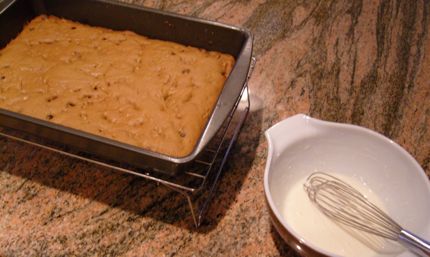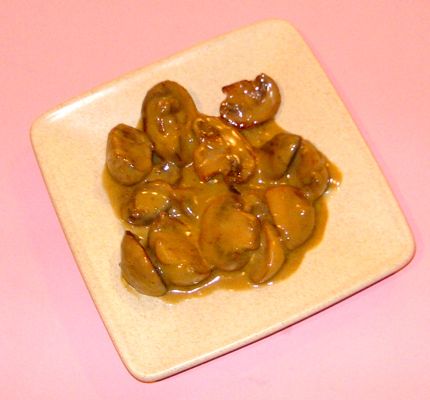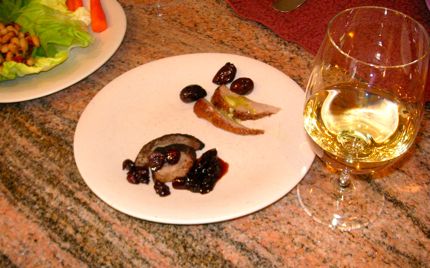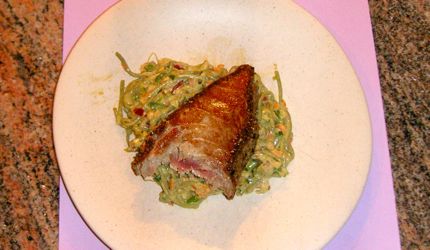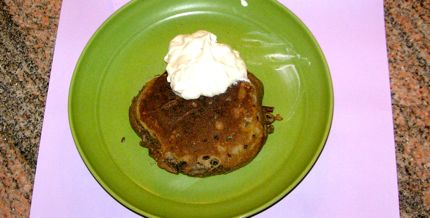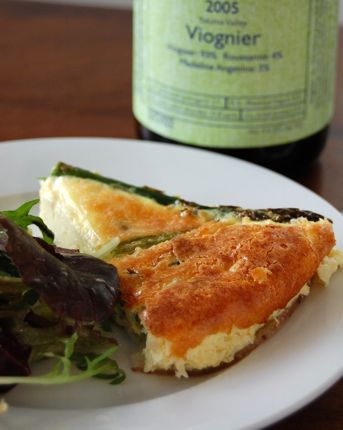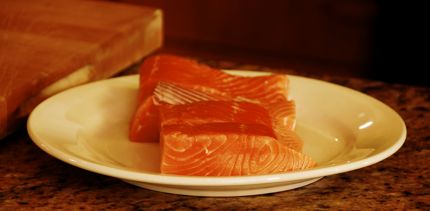Golden Beet Carpaccio
February 1, 2010
Golden Beet Carpaccio
Varietal: Chardonnay
Serves 4
You either love ‘em or you hate ‘em. Of course, I’m talking about beets. But if you are an aficionado, you’ll especially appreciate this recipe that comes from my seventh book, Pacific Northwest Wining & Dining, thanks to chef Maria Hines, owner of Tilth restaurant. Totally organic Tilth is an unpretentious, buttery-yellow space located in a Craftsman-style house in the bustling Wallingford neighborhood of Seattle, a few miles north of downtown. Almost everything on the menu is preceded by the farmers’ or fishers’ names, so you can eat to your heart’s content with a clear conscience. The salad below demonstrates Chef Maria’s style of using simple ingredients to create bold flavors and beautiful plate presentations. The salad can take on a more rustic look if you simply cut the golden beets into one-inch cubes and toss them with the vinaigrette instead of slicing the beets and drizzling the vinaigrette.
Herb Vinaigrette
4 sprigs fresh flat-leaf parsley
4 sprigs fresh tarragon
4 sprigs fresh chervil
4 fresh chive stalks
1/4 cup extra virgin olive oil
1 tablespoon red wine vinegar
2 medium golden or red beets, scrubbed and tops and root ends trimmed (See Cook’s Hints, below)
5 sprigs fresh thyme, or 1/2 teaspoon dried thyme, crumbled
Kosher salt
Freshly ground black pepper
1/4 cup pine nuts, walnuts, or hazelnuts, toasted (See Cook’s Hints, below)
1/2 cup (2 ounces) fresh, soft goat’s-milk cheese (chèvre), crumbled
1. To make the Herb Vinaigrette, mince the parsley, tarragon, chervil, and chives. Transfer to a small mixing bowl and gently stir in the olive oil and vinegar. Set aside.
2. Preheat the oven to 400°F. Line a small roasting pan with aluminum foil.
3. Add the beets and thyme sprigs to the roasting pan and sprinkle with salt and pepper.
Fill the pan with water until the beets are almost completely submerged, cover with aluminum foil, and bake the beets for 1 to 1 1/4 hours, or until they are very tender. To test, insert the tip of a small, sharp knife into the center of one of the beets. Remove the beets from the pan and let cool. When the beets are cool enough to handle, remove the skins.
4. To serve, slice the beets into very thin rounds. Arrange them on 4 small plates in a spiral pattern, overlapping them to form a circle. Drizzle the beets with the vinaigrette, then sprinkle the pine nuts and goat cheese evenly over the beets. If desired, sprinkle lightly with salt and pepper.
Cook’s Hints: (1) To toast nuts or seeds (sesame, mustard, coriander, pumpkin, or cumin), heat them in a small, dry skillet over medium heat for 3 to 5 minutes, or until they begin to turn light brown and/or give off their aroma (mustard seeds begin to pop), shaking the pan back and forth often so the ingredients do not burn. Remove from heat, cool, and add to your recipe, or grind as directed. (2) Chef Maria uses a clean, dry kitchen towel to remove the beet skins by simply wiping them off, a method that also saves your hands from getting stained by beet juice.
Recipe reprinted from Pacific Northwest Wining & Dining: The People, Places, Food, and Drink of Washington, Oregon, Idaho, and British Columbia (Wiley, $34.95) by Braiden Rex-Johnson.


